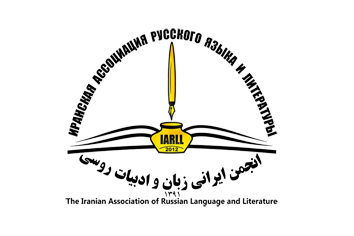Apocalyptic Images and Their Variations in N. S. Gumilyov's Poetry
DOI:
https://doi.org/10.52547/iarll.18.53Keywords:
N. S. Gumilyov's Poetry , Symbolic Images , Apocalypse , Interpretations of the Patristic Authors , R. Steiner's Anthroposophy , Great-Memory , WanderingsAbstract
The article analyzes the use of apocalyptic images in the poetry of N.S. Gumilyov. Symbolic imagery is generally understood in the context of its Patristic interpretation, as well as from the perspective of R. Steiner’s Anthroposophy. It is shown that Gumilyov's worldview, manifested in his poems, is colored eschatological and reflects the world as a whole from the days of Creation on the day of the Last Judgment. The things of the world that attract the poet are evaluated in their correlation with the end of the world, whether it is wanderings, love, Russia, death. Apocalyptic images in Gumilyov's poetry appear in their various transformations: an exact mention, a hint, a variation in the poet's imagination, or the development of an image in the spirit of the original. At the same time, the images are used according to the spirit of the Apocalypse and it reflects the depth and originality of the poet's worldview.
Extended abstract:
The main purpose of the published article is to analyze the use of a wide range of apocalyptic images in N. S. Gumilev's poetry. They were significant for the poet and formed a clear line in his poetry. These images indicate that Gumilev's poetic ideas were developed against a broad historiosophical background and had a clear eschatological coloring. The very statement of the purpose as the identification of this eschatological component of the poet's imagery determines the scientific novelty of the research: the images of the Apocalypse did not attract special attention of philologists, but were only mentioned in connection with the Christian themes of Russian poets. The symbolic imagery of Revelation is understood in the context of its patristic interpretation, as well as of R. Steiner's anthroposophy – this determines the method of analyzing the images of tradition transferred to poetry; the essence of the method is the comparison of the meaning of the image in the tradition and in the poet's text. As a result, it is shown that Gumilev's worldview, manifested in his poems, reflects the world as the great process from the days of Creation to the day of Judgment, and every subject in the world that attracts the poet is evaluated by him in the correlation with the end of the world, whether it is his wanderings, love, Russia, death. That means, according to the main hypothesis of the study, the ideas of the poet are based on a deep religious context that determines the poet's creativity. In the article various modes of existence of apocalyptic images in the poet's texts are examined and it is shown that Gumilev’s apocalyptic symbols appear in different variations: from their direct translation to an emotional and associative hint, as an exact mention, reminiscence, variation in the poet's imagination or the original development of the image. In the latter case, there is the correspondence of the image developed in Gumilev’s own way to the spirit of the original source. However, the article also notes the cases of arbitrary fantasies of the poet on the theme of the end of the world. So it is underlined that the integral concept in Gumilev's poetry was in the process of formation. The "I" of man as the center of history and the history of the world as the history of human self-consciousness – these ideas are outlined in Gumilev's poems. The conclusion of the study of Gumilev's apocalyptic figurative line states: the images of the Apocalypse expressed the depth and originality of the poet's emerging religious worldview, and the poet's early tragic death found him on the threshold of his creative and spiritual maturity.
References
Волошин М.А. (1977). Стихотворения. Л.: Советский писатель, 464 с.
Дамаскин И., св. (1913). Три защитительных слова против пориающих святые иконы или изображения // Полное собрание творений св. Иоанна Дамаскина. СПб., т. 1. 442 с.
Дионисий Ареопагит (2002). О небесной иерархии // Дионисий Ареопагит. Сочинения. Максим Исповедник. Толкования. СПб.: Алетейа, 864 с.
Зобнин Ю.В. (2000). Странник духа // Н.С. Гумилев: pro et contra. Личность и творчество Николая Гумилева в оценке русских мыслителей и исследователей. Антология. Санкт-Петербург, Изд-во РХГА, с. 6–52.
Максим Исповедник (2002). Толкования // Дионисий Ареопагит. Сочинения. Максим Исповедник. Толкования. СПб.: Алетейа, 864 с.
Н.С. Гумилев: pro et contra. Личность и творчество Николая Гумилева в оценке русских мыслителей и исследователей. Антология. (2000). Санкт-Петербург: РХГА, 672 с.
Палама Г., свт. (1993). Беседы (Омилии). Ч. 1. М.: Паломник, 269 с.
Штейнер Р. (2009). Апокалипсис. Ереван: Лонгин, 448 с.
Bibliography
- Voloshin M.A. (1977). Stihotvorenija. L.: Sovetskij pisatel', 464 s.
- Damaskin I., sv. (1913). Tri zashhititel'nyh slova protiv poriajushhih svjatye ikony ili izobrazhenija // Polnoe sobranie tvorenij sv. Ioanna Damaskina. SPb., t. 1. 442 s.
- Dionisij Areopagit (2002). O nebesnoj ierarhii // Dionisij Areopagit. Sochinenija. Maksim Ispovednik. Tolkovanija. SPb.: Aleteja, 864 s.
- Zobnin Ju.V. (2000). Strannik duha // N.S. Gumilev: pro et contra. Lichnost' i tvorchestvo Nikolaja Gumileva v ocenke russkih myslitelej i issledovatelej. Antologija. Sankt-Peterburg, Izd-vo RHGA, s. 6–52.
- Maksim Ispovednik (2002). Tolkovanija // Dionisij Areopagit. Sochinenija. Maksim Ispovednik. Tolkovanija. SPb.: Aleteja, 864 s.
- N.S. Gumilev: pro et contra. Lichnost' i tvorchestvo Nikolaja Gumileva v ocenke russkih myslitelej i issledovatelej. Antologija. (2000). Sankt-Peterburg: RHGA, 672 s.
- Palama G., svt. (1993). Besedy (Omilii). Ch. 1. M.: Palomnik, 269 s.
- Shtejner R. (2009). Apokalipsis. Erevan: Longin, 448 s.
Downloads
Published
How to Cite
Issue
Section
License
Copyright (c) 2021 Issledovatel'skiy Zhurnal Russkogo Yazyka i Literatury

This work is licensed under a Creative Commons Attribution 4.0 International License.
![]()
"Creative Commons Attribution 4.0 International (CC-BY 4.0)"


